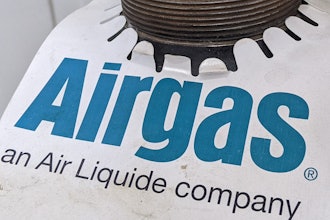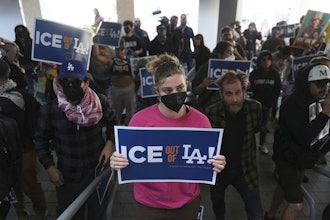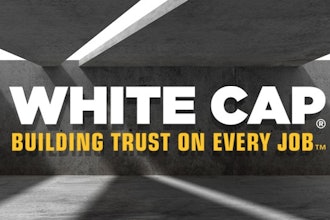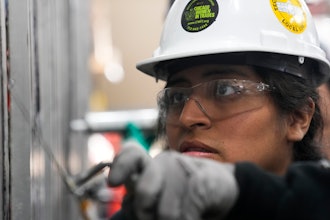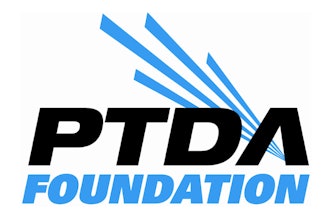
Jonathan was told by the warehouse supervisor to stay away from the forklift. He was not a material handler nor certified to drive material handling equipment. He was an assembler. Jonathan was curious about how to maneuver the forks on the lift to reach up 50 feet above the floor. He was warned two additional times when found driving the forklift around the warehouse. On the fourth time, he lost control of the forklift, caught his leg between the forklift and a retaining rail, and severed his foot just above the ankle.
Jonathan survived because an employee working nearby heard the grinding sound of the forklift, ran to the scene of the accident just in time to take off his belt and make a tourniquet to control the profuse bleeding that would otherwise have killed Jonathan as he screamed for someone to call 911.
As a Safety Officer, there’s no greater sense of anxiety and sadness than to go to an employee’s home to inform the next-of-kin the results of a workplace accident. Head injuries, loss of limbs, a broken back, or death rewrites the future for families. It’s a future of income loss, pain, immobility, and the end of an occupation that may have been the only work the employee knew how to perform. There’s no greater sense of frustration for a business owner than to watch supervisors begin to enforce the company safety rules AFTER an accident. Maybe they need to feel less guilty because they neglected their responsibility to have a safe and healthy workplace, but they should not expect OSHA to be sympathetic.
Who is responsible for Jonathan losing his foot? If you’re his supervisor, you may say Jonathan because, “He should have known better and used common sense.” If you’re the Safety Officer, you know it’s the duty of the company to keep employees safe and the duty of employees to follow safety rules. There’s enough blame here to go around, but it’s the duty of a supervisor to enforce safety rules.
To be certain, supervisors understand their responsibilities, they must be trained — even when they have worked in similar positions at another company. Specifically, they must be trained to know the difference between a policy and a rule. It’s a serious workplace issue because it results in inconsistent management, negligence, and discrimination.
A POLICY is a general guideline. In business, it’s a formal statement of how they expect to manage the company. With regard to safety, the policy may say, “We expect employees to perform all work in a safe manner and to follow all safety procedures.” That is a policy — a statement of expectation. Maybe we should say, “We expect employees to use common sense and avoid any kind of behavior that would result in injury or death,” but we know that doesn’t work. If common sense was common, we wouldn’t need “Do Not Eat” labels on silica packets.
A RULE is a statement of boundaries with consequences. With regard to safety, the rule may say, “Employees who engage in unsafe behavior that can lead to injury or death will be terminated.” Now, that IS a rule. If this rule had been enforced, Jonathan would have been fired on his first offense, but he would still have a foot! Unfortunately, that rule was not enforced. The supervisor decided to treat it like a policy and the employee suffered. The supervisor said something like, “You should not be driving a forklift; you are not certified.” Then, he said, “I told you that you must be certified,” and on the third offense said, “I bet you will have a wreck on that thing.” No joke!
If we can agree a rule has boundaries and consequences, then we know we must be careful establishing them. They must be enforced. The list will be directly influenced by the nature of the business. In a distribution center where there are explosives or flammable tanks, the primary concern may be fire. The number one rule may be “No employee can enter this building with anything that can cause a flame — no matches, lighters, smoking materials (cigarettes, cigars, or pipes).” The consequence will always be immediate termination on the first offense.
For some offenses, it’s obvious the appropriate action is termination. For others, it may be appropriate to use a lesser form of punishment on the first offense. When the potential outcome is death, it’s impossible to argue an appropriate first step of discipline is to issue a casual comment.
There will probably be a few rules where everyone immediately understands that every violation requires management to act. Every member of management must agree they will enforce the rules uniformly. They must also agree they will remain united and consistent with whatever discipline is required. If absenteeism is a disciplinary offense on the first shift, then the supervisor on the second shift must agree to issue discipline as well. Inconsistent discipline is a common cause of complaints of discrimination and favoritism.
One of the most effective list of rules ever created was the outcome of a team effort. Employees in a distribution center were asked to list the employee behavior they believe should be prohibited. From the suggestions, management was able to create a list of rules. Yes, some were ridiculous, but some were excellent. It was no surprise safety was the first concern, and employees felt they contributed to the outcome. Here is a sample list of work rules frequently posted:
- Falsifying a company record, including application form, time record, expense record
- Clocking in/out for another employee
- Failure to notify a supervisor/manager of medications taken by an employee, which may pose safety risks during work hours for the employee or his/her co-workers
- Failure to report a work-related injury
- Violation of safety rules and/or procedures
- Horseplay that can lead to injury or death
- Sabotage
- Smoking in any work area
- Having an unauthorized weapon on company property
- Abusing, damaging, or misusing company equipment, tools or supplies
- Reporting for work in an impaired condition
- Possession or use of intoxicating beverages and/or possession, use, exchange or distribution, transfer of illegal or drugs on company premises
- Dishonesty or theft. This applies to property of the company, customers, and other employees and includes the deliberate destruction or removal of such property without authorization
- Making a false claim of harassment, discrimination, or abuse against another employee, customer or vendor
- Fighting or striking a management member or other person
- Deliberately blocking an evacuation exit
- Pouring any flammable or chemical down a drain
 Nancye M. Combs, AEP, SPHR, President and Chief Executive Officer of HR Enterprise, Inc.
Nancye M. Combs, AEP, SPHR, President and Chief Executive Officer of HR Enterprise, Inc.No manager wants to own the guilt associated with failure to enforce safety rules. To ensure that never happens, the first step is to establish reasonable and enforceable rules. Then, inform employees about them. Post them on the Intranet, on the bulletin board, and in other areas where employees can see them. Conduct “How to…” training for supervisors. Help them learn to enforce the rules. Lack of training may be the only reason they are reluctant to confront an employee. They just do not know how and you can help them learn. When training managers, I remind them we get our employees with all their fingers and toes. It’s our duty to make sure they leave the same way, even when they fail to use common sense and do stupid things to put themselves in harm’s way. It’s our duty.
This piece originally appeared as a STAFDA Advisory article here











